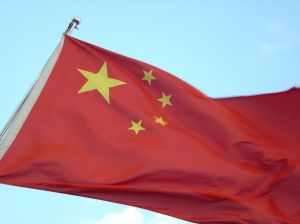This week, China will launch the pilots of its Beijing and Shanghai emmissions trading schemes. But the operating environment for these schemes will be vastly different to that in Australia or the European Union.
From 2013 China has introduced seven pilot trading schemes in key cities and provinces, including Beijing, Shanghai and Guangdong. These schemes vary in scale, rules, and coverage: some cover over 50% of local greenhouse emissions; some are more lenient to the use of carbon offsets; some are open to the option of auctioning emission permits.
At first glance, they all appear similar to what we see in Europe and the US.
Emissions trading schemes are market-based mechanisms. They create incentives for emissions reduction by requiring polluters to buy emission permits that can also be traded between firms.
These schemes have found their way into many advanced economies: not just Europe and Australia, but also New Zealand, Tokyo, California, ten northeastern states of the US, British Columbia, Quebec, and South Korea. These schemes all operate in a mature capitalist economy governed by a liberal democratic state.
But now emission trading has arrived in non-traditional capitalist states. Plans for implementing an ETS have emerged in other major developing countries such as Kazakhstan, Mexico, Brazil, Turkey, and Chile.
China is the most prominent newcomer. As a so-called “socialist market economy”, it will operate in a political-economic context significantly different from those western capitalist economies.
This is important because significant variations in political, regulatory and institutional traditions have profound implications for delivering the expected environmental results.
Carbon markets usually need a healthy financial sector to help with emission trading activities. In China, private finance has not played a key role in the domestic carbon markets – perhaps because it can’t. China’s carbon markets are created, financed, and operated by Chinese government, either directly or indirectly.
The involvement of finance is not primarily driven by anticipation of a cycle of economic growth as suggested by some political economists, but the power of the state.
Another interesting aspect is the ownership of emission trading facilities. We identified 42 domestic carbon exchanges in China. Most are backed by state-owned enterprises. These exchanges depend on government and are subject to indirect state influence – more so than their counterparts in major international markets.
In addition, many of the firms participating in China’s emissions trading schemes are state-owned. The regulated parties are not all “private” actors whose primary objective is to secure material profits. Power companies are not entirely free to pass the cost impacts of carbon prices to electricity users by raising retail prices; the central government has the authority to decide.
The private sector in China is generally not very keen to reduce greenhouse gas emissions voluntarily. Further, environmental NGOs are neither politically influential nor financially capable of playing an active role. To secure environmental benefits, efforts by the government are therefore profoundly important.
But the reality is that the Chinese ETS, and climate change policy generally, is not principally coordinated by a designated environmental authority. The Ministry of Environmental Protection, China’s national environmental agency, does not play a lead role in formulating climate change policies or setting up carbon markets.
The main player is the National Development and Reform Commission (NDRC), the peak macro-economic planning agency of China. The first priority of the NDRC is economic and social development. National climate change policies, including the ETS programs, are formulated and implemented by its subsidiary climate change department.
This organisational arrangement suggests that environmental imperatives are subordinate to economic and social objectives.
Our analysis allows for some cautious optimism. If China introduces a national ETS, it could become the cornerstone of a regional carbon trading network in the Asia Pacific in the next 10 or 15 years or so.
The caveat is that it might operate quite differently to the European Union ETS or what is currently operating in Australia. Prospects for international linking are uncertain. And most importantly, there’s no way of knowing whether the initiative can really deliver substantive environmental and economic outcomes.
Alex Lo is a Lecturer at the Griffith School of Environment at Griffith University
Michael Howes is a Senior Lecturer in Sustainability and Environmental Policy at Griffith University
Alex Lo’s research is funded by the Griffith Climate Change Response Program of the authors’ affiliation. This research is funded by the Griffith Climate Change Response Program of the authors’ affiliation.
Michael Howes received funding from the National Climate Change Research Facility in 2012.
This article was originally published at The Conversation.
Read the original article.








